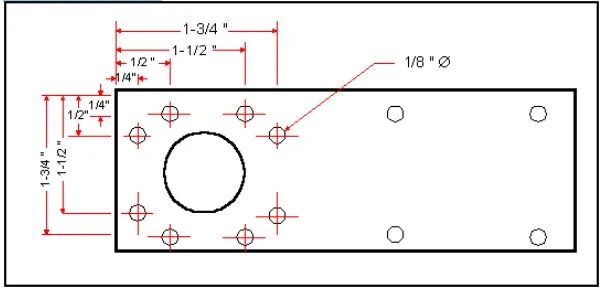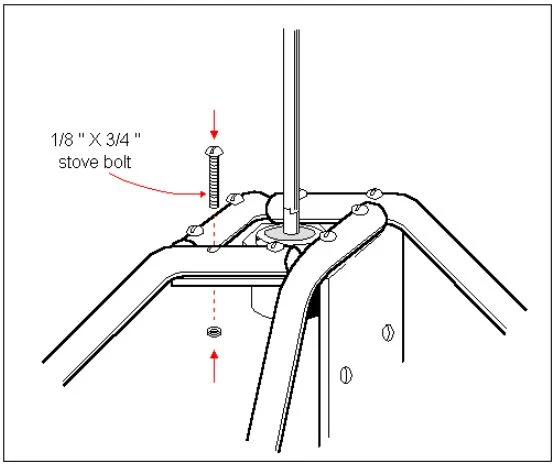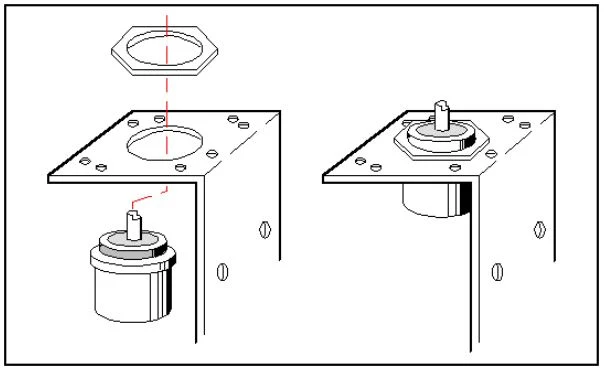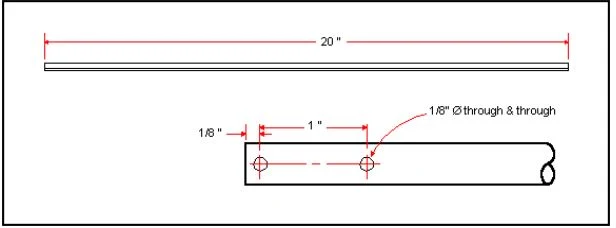For over fifty years I have been matching my home-brew antennas to my radio, using makeshift field-strength-meters, lamps, pencils (arc), or finger (ouch). My solid-state amplifiers have complained about this treatment, however, forcing me to consider methods that really define the matching in terms of standing- wave ratio (swr). The effort resulted in a very simple device that measures swr to better than 1 : 1 in all the bands I am interested in, 7 to 435 MHz, it can be built in a few hours for less than few dollars. The basic method is a stripline-type directional coupler. The operating principle is that a properly terminated line parallel to, and coupled to, the transmission line will pick up energy traveling in one direction. The detected signal from this coupled line will represent either the forward or rcflected energy depending upon which end is terminated Fig, 1 gives the schematic.
The Circuit
Swr values are determined from the forward and reflected peak- voltage outputs:
V(FWD)+V(RRFL) / V(FWD)-V(REFL)
The outputs can also be calibrated in terms of power. However* the output-voltage sensitivit>' of this type of directional coupler is directly proportional to frequency. As an example, using this particuhir device at 7 MHz, 100 Watts is required to detect an swr of hi, while at 146 MHz, less than 250 mW will make an equivalent measure- ment. This power/frequency relationship is a limitation.
The effect is in the right direction, how- ever. HF higher power is more likely available than at the VHF/UHF frequen- cies. Power-handling ability is also fre- quency related, and it is limited by the cou- pling -striptine terminalion resistors. Exam- ples arc about 4 W at 435 MH/, 35 W at 146 MHz, and 1 kW at 28 MHz, Total power dissipated at maximum power input is les3 than one Watt.
This project has been simplified by using a glue-down stripline technique that I have employed successfully in a number of previous projects. Striplines are cut from double-sided glass-epoxy PC board having the same dimensions that you would choose using the etched-PC board method. One side of the stripline is smeared with glue and pressed firmly against the common-base PC hoard. Changes can be made within minutes by lift- ing the glue-down stripline with a knife and replacing it with one having the altered dimensions. No dc connection is required between the glueline foils.
In this project, two striplines are glued together to effectively double the dielectric thickness. This results in a wider stripline for a given impedance, making fabrication and handling easier.
Matching the directional coupler-line impedance with that of the transmission line is a critical parameter, significant differences resulting in a self-generated swr error. Optimum strip! inc width was calculated using conventional stripline theory. Assuming a 50-Ohm Zo (line impedance), the calculations resulted in a 0.219-inch width when using two sandwiched 0.062-inch thick glass- epoxy PC strips having 1.5-ml foils (net J 18-inch dielectric). A dielectric constant of 4.5 was assumed for the glass-epoxy material. Tests indicate that the lloating center foils have no effect.
The pickup lines, glued to the top of the 50-Ohm conducting stripline, are 0. 125-inch wide, Although their calculated impedance is 69 Ohms, the termination resistance in this special configuration is about 60 Ohms. This resistance is experimentally pruned to null for zero output when the pickup is in a position to detect reflected energy and when the transmission line is terminated with a non-reflective load (50 Ohms). Pruning is accomplished easily using parallel 4-W resistors.
My assembly required four: two 150s, a 330, and a 2.2k-Ohm resistor. The resistor connections are with minimum lead lengths (approximately l/32nd inch). The assembly is reverse-connected in the transmission line to enable the pruning procedure for both pickup lines in an identical manner. Lack of fabricating symmetry will result in slightly different resistor values for the two pickup lines. A large output-readout dynamic range en- hances the usefulness of the device. As an example, only 1.2 V is indicated in the for- ward direction when used with my 7-MHz, 100-W transmitter. This means that to read a 1:1 swr, it is necessarv to detect a reflecitxl voltage of 0.057 V. 1 have found that selected lN34As will reliably meet this requirement. In a typical package often diodes from Radio Shack, over half of them had a back resis- tance of more than 10 Megohm (less than 1 uAat 10 V).
Using these selected diodes in the peak- detection circuit together with a high-im- pedance (10 Megohm) digital voltmeter permits reliable readings down to 0,05 V. The table in Fig. 2 shows input readout characteristics and the correction factors. The required readout sensitivity is a trade* off of how much power is available at a par- ticular frequency and the desired swr- mea- surement accuracy. The usual ham shack VOM- multimeter wilt be adequate for most applications.
Fabrication details are shown in the Fig. 3 layout, and the stripline cross-section draw* ing in Fig, 4. It is best to start by cementing the stripline sandwich and then finish trim- ming the edges to the required width. A file works fine, however — as does a sandpaper block, which will save dulling your file with the glass epoxy material.
The primary stripline width should be held toO.219 inch, ± 0.005 inches, I used calipers to size the striplines, but a ruler would be satisfactory if used with considerable care. Maintaining symmetry through the assembly is important. When mounting the BNC chas- sis connector, use a double nut so that it can be fastened in a position for minimum com- mon-return inductance.
Final alignment is simply pruning the pickup-line termination resistors in the man- ner mentioned earlier (multiple 1/4-W resis- tors). It is best to do this procedure at the highest frequency you intend to use the swr device— 1 used 435 MHz. One thing required is an accurate 50-Ohm termination. I used a fifty -fool section of RG-58/LJ terminated with two 100-Ohm, I /4-W resistors. The 7.5-dB cable loss reduces the estimated worst-case resistor reactance swr from a val- ue of 1.2 to L03
After pruning the lerminations of both pickup striplincs for minimum reflected indi- cation (less than 1 : 1 swr)» the device is ready to measure any swr of less than 10. The calibration results were made by terminating a short s^ection of RG-58/U with various values of 1/4 W resistors,
Inability to null the swr device may be the result of an error in the primary stripline impedance. This could be caused by a differ- ent gla&s-epoxy dielectric constant. Try alter- nate striplines differing in widths of about O.OiO inches.
Spurious responses In the transmitted source can cause a measurement error. As an example, a — 30 dB spurious signal is likely to result in a significant error when making a U swr measurement. Also* reflected signals from a reactive source will result in an error. This error will be particularly evident with large swr values.
Connectors also can be a suspect source of error. For example, I have used RG-59/U connectors {75 Ohm) for RG-8M cable (an RG-8 mini foam), and measurements indicate that they contribute to the swr.
How did my home-brew antennas mea- sure? The 435-MH2, 1 5-elemem antenna swr was 1.2, the 2m 5-element was 1 .4, the 2m J antenna was L4, and the 2Qm flat -top with a tuned antenna coupler ai the transmitter was
1.5. That makes sense, 1 spent more lime matching the UHF antenna.
In summation: You can match antennas adequately without an swr instrument, hut it's a lot easier if you have this simple gadget. Besides. it*s a good way to become acquaint- ed with directional couplers

















